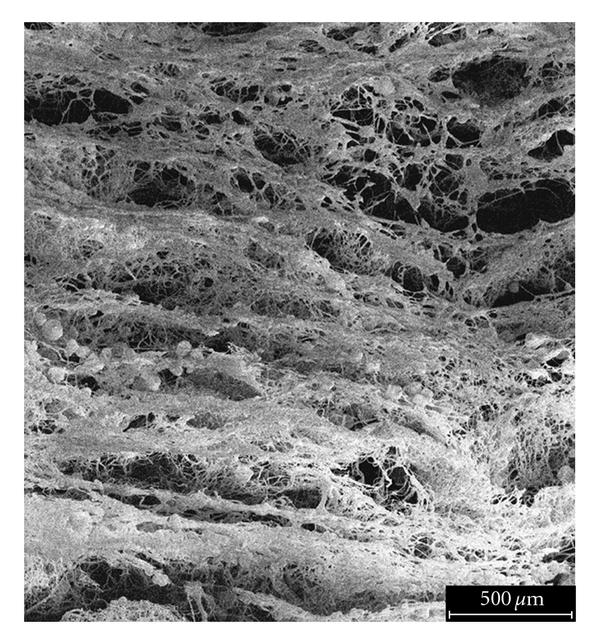▼ Reference
- Kim T G, Chung H J, Park T G. Macroporous and nanofibrous hyaluronic acid/collagen hybrid scaffold fabricated by concurrent electrospinning and deposition/leaching of salt particles. Acta Biomaterialia 2008; 4: 1611.
- Meng C, Liu X, Li R, Malekmohammadi S, Feng Y, Song J, Gong R H, Li J. 3D Poly (L-lactic acid) fibrous sponge with interconnected porous structure for bone tissue scaffold. International Journal of Biological Macromolecules 2024; 268, Part 1: 131688. https://www.sciencedirect.com/science/article/pii/S0141813024024930 Open Access
- Nam J, Huang Y, Agarwal S and Lannuntti J (2007) Improved Celllular Infiltration in Electrospun Fiber via Engineered Porosity. Tissue Engineering 13 2249-2257.
- Wulkersdorfer B, Kao K K, Agopian V G, Ahn A, Dunn J C, Wu B M, Stelzner M. Bimodal Porous Scaffolds by Sequential Electrospinning of Poly(glycolic acid) with Sucrose Particles. International Journal of Polymer Science 2010; 2010: 436178. Open Access
▼ Credit and Acknowledgement
Author
Wee-Eong TEO View profile
Email: weeeong@yahoo.com
 ElectrospinTech
ElectrospinTech

